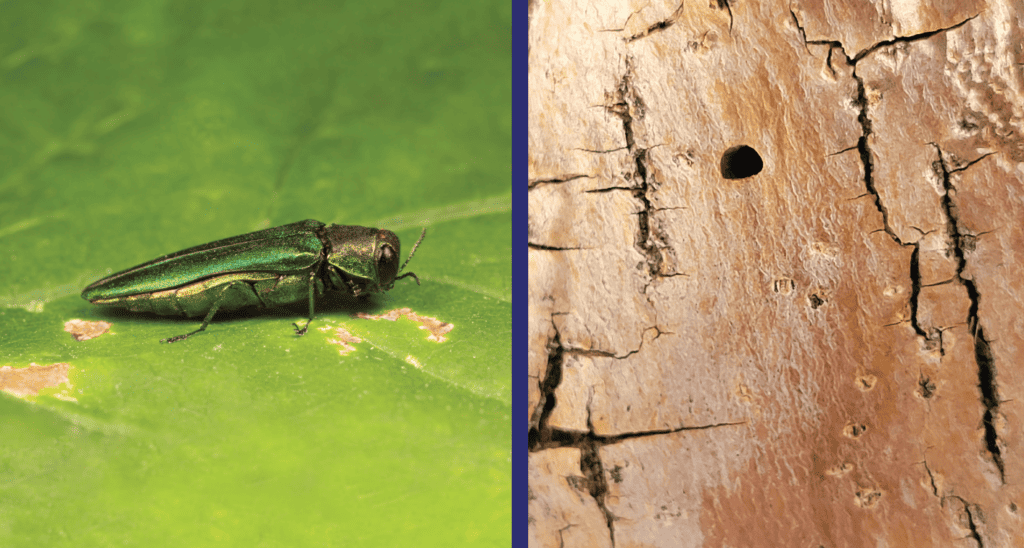Arapahoe County recently reported a sighting of the Emerald Ash Borer (EAB), an invasive insect that poses a significant threat to North American ash trees. The detection occurred within the City of Littleton near the border with Englewood, Greenwood Village, and Centennial. With this concerning development, residents are urged to educate themselves, prepare, and explore potential measures to safeguard their ash trees and contain the spread of EAB. The Emerald Ash Borer (EAB) is native to Asia. This invasive species has silently crept into North America, wreaking havoc on Ash trees.
Below are signs of an Emerald Ash Borer infestation. We will also discuss the importance of early detection and intervention.
Disrupted Canopy and Thinning
One of the first signs of an EAB infestation is a disrupted canopy. As these tiny beetles lay their eggs beneath the bark, their larvae voraciously feed on the inner layer of the tree, disrupting the flow of water and nutrients. Consequently, the upper branches will show signs of thinning and declining health, causing the canopy to appear patchy and irregular.
D-shaped Exit Holes
Emerald Ash Borers undergo a remarkable life cycle inside the tree. Once the larvae mature, they create small, distinctive D-shaped exit holes on the bark as they emerge as adult beetles. These exit holes are a telltale sign of an EAB infestation.
S-shaped Galleries Underneath Bark
The larvae of Emerald Ash Borers create winding tunnels as they feed on the tree’s inner bark. These winding pathways serve as both a source of sustenance for the larvae and a clear sign of an infestation. When the bark is peeled back, the gallery of tunnels become visible, often confirming the presence of EAB in the tree.
Vertical Splits and Increased Woodpecker Activity
As an Ash tree becomes weaker due to EAB infestation, the bark may develop vertical splits. These openings provide an attractive feeding ground for woodpeckers, which prey on EAB larvae. An increase in woodpecker activity around an Ash tree can serve as an early warning sign of an impending infestation.
Epicormic Shoots
When an Ash tree is under stress from an EAB infestation, it will attempt to compensate by producing shoots also known as water sprouts. These shoots are small branches that sprout along the trunk or main branches of the tree under the bark, in a desperate attempt to gather more sunlight and nutrients. The presence of numerous epicormic shoots can indicate a severe infestation.
The Emerald Ash Borer poses a significant threat to the Colorado Ash tree population. As this invasive pest continues its relentless spread, it is crucial for residential and commercial property owners to be vigilant in identifying the early signs of infestation.
A timely response and preventative measures can help slow the spread, avoiding the loss of valuable Ash trees and preserving the beauty and ecological balance of our landscapes. Regular inspections, reporting of suspected cases, and implementing appropriate management strategies are essential steps in the fight against the Emerald Ash Borer invasion.
The most common treatment methods are trunk and soil injections. Trunk injects require drilling a small injection site at the base of the tree and can protect ash trees for up to two years, while soil injections are less invasive and can defend EAB for about a year. All injections should be administered by a tree care expert.
If you see signs of Emerald Ash Borer, contact Denver Commercial Property Services’s Plant and Tree Health Care team at info@denvercps.com or complete the form below. Our team of certified arborists are available to provide a strategy to help preserve your trees.



